Tech
Comprehensive Structured Finance Products for Diverse Needs

In the ever-evolving world of finance, businesses and investors are constantly seeking innovative ways to manage risk, enhance liquidity, and meet their unique financial needs. Structured finance products have become essential tools for achieving these goals, offering tailored solutions that can be adapted to a wide range of financial circumstances. These products, which include complex securities and financing arrangements, allow for the pooling and redistribution of risk, providing opportunities for both institutional investors and companies to access capital and manage their portfolios effectively.
What Are Structured Finance Products?
Structured finance products are advanced financial instruments designed to meet specific needs by combining different types of assets, liabilities, and financial structures. These products typically involve the securitization of assets such as loans, mortgages, or receivables, which are then packaged into securities that can be bought and sold in financial markets.
The purpose of structured finance products is to transform illiquid assets into liquid ones, provide capital to businesses, and redistribute risk across various investors. By structuring these financial instruments in a specific way, financial institutions can create products that appeal to different types of investors, ranging from conservative to high-risk tolerant.
One of the key characteristics of these products is their ability to address the specific financing needs of companies or investors, whether it’s raising funds for a new project, managing cash flow, or gaining exposure to a particular asset class. This flexibility makes structured finance products a crucial part of modern financial markets.
Types of Structured Finance Products
There is a wide range of structured finance products available, each designed to meet distinct financial requirements. Some of the most common types of structured finance products include:
1. Collateralized Debt Obligations (CDOs)
A Collateralized Debt Obligation (CDO) is a type of structured finance product that pools together various debt instruments, such as loans, bonds, and mortgages, and repackages them into different tranches or layers. Each tranche is assigned a different level of risk, with the most senior tranches receiving the highest credit rating and the lowest tranches carrying the most risk but offering higher returns.
CDOs allow investors to gain exposure to a diversified pool of debt while providing issuers with a way to offload risk. These products are particularly attractive to institutional investors looking for high-yield opportunities, although they can also be complex and carry significant risk, especially in volatile markets.
2. Mortgage-Backed Securities (MBS)
Mortgage-Backed Securities (MBS) are another type of structured finance product that involves the pooling of individual mortgage loans into a security that can be sold to investors. The cash flows from the underlying mortgage payments are used to pay bondholders, and the securities are often divided into different tranches, just like CDOs.
MBS can be a great way for financial institutions to free up capital while offering investors a way to gain exposure to the real estate market. However, the performance of these securities is tied to the stability of the housing market, and during economic downturns, MBS can become quite risky, as seen during the 2008 financial crisis.
3. Asset-Backed Securities (ABS)
Asset-Backed Securities (ABS) are structured finance products that are backed by various types of assets, such as credit card receivables, auto loans, student loans, or other forms of consumer debt. Similar to MBS, ABS involve pooling a group of loans or receivables, which are then securitized and sold to investors. These products offer an opportunity for investors to gain exposure to the underlying assets and receive regular income from the payments on those assets.
ABS are popular among investors seeking a steady cash flow, and they can be less risky than MBS because they are typically backed by a diverse set of assets, not just a single market segment like real estate.
4. Collateralized Loan Obligations (CLOs)
Collateralized Loan Obligations (CLOs) are structured finance products that pool together loans, primarily corporate loans, and package them into different tranches, each offering varying levels of risk and return. CLOs are similar to CDOs, but they are specifically focused on loans rather than bonds or mortgages. The loans in CLOs are typically leveraged loans, meaning they are issued to companies with higher levels of debt.
CLOs have become increasingly popular due to their ability to offer high returns to investors while allowing businesses to access credit more easily. However, CLOs can be risky, particularly when the underlying companies experience financial difficulties or when economic conditions worsen.
5. Structured Investment Vehicles (SIVs)
Structured Investment Vehicles (SIVs) are entities that issue short-term debt to investors and use the proceeds to invest in long-term assets, such as MBS, CDOs, or other securities. The goal of an SIV is to take advantage of the difference in the yield between short-term debt and long-term investments, allowing it to generate returns for its investors.
These vehicles provide liquidity to the markets and help institutions manage their portfolios by offering short-term investment opportunities. However, they can also be highly sensitive to changes in interest rates and market conditions, which makes them riskier, particularly during periods of financial instability.
6. Synthetic Collateralized Debt Obligations (Synthetic CDOs)
Synthetic CDOs are a variation of traditional CDOs, but instead of being backed by actual physical assets like loans or bonds, they are backed by credit default swaps (CDS). These swaps are used to transfer the credit risk of a reference asset without actually owning the asset itself. Synthetic CDOs allow investors to gain exposure to credit risk without having to own the underlying assets, offering opportunities for speculative investment.
While these products can offer higher returns, they are highly complex and can carry significant risk, as they are dependent on the performance of the reference assets and the creditworthiness of the parties involved in the swaps.
Benefits of Structured Finance Products
Structured finance products offer several advantages to both businesses and investors. Some of the key benefits include:
1. Capital Access
For businesses, structured finance products provide an effective way to access capital. By securitizing assets, companies can raise funds without taking on traditional loans or equity financing. This allows them to maintain control over their operations while meeting their financial needs.
2. Risk Diversification
For investors, structured finance products offer the opportunity to diversify their portfolios by gaining exposure to different asset classes and sectors. By investing in a range of products, such as CDOs, MBS, and ABS, investors can spread their risk and potentially reduce the impact of any single investment’s poor performance.
3. Tailored Solutions
Structured finance products can be customized to meet the specific needs of businesses and investors. Whether it’s creating a product that matches an investor’s risk appetite or developing a financing solution that fits a company’s unique cash flow requirements, these products provide flexibility in how financial needs are addressed.
4. Higher Returns
For risk-tolerant investors, structured finance products offer the potential for higher returns compared to traditional investments like bonds or stocks. By taking on more risk, investors can earn higher yields, which makes these products attractive to institutional investors looking for higher yield opportunities.
Conclusion
Structured finance products play a pivotal role in the financial world by offering innovative solutions for managing risk, accessing capital, and diversifying investment portfolios. Whether it’s through the creation of CDOs, MBS, CLOs, or ABS, these products provide businesses and investors with the tools they need to meet their unique financial goals. However, given their complexity and risk, it’s essential for investors and businesses alike to thoroughly understand these products before diving in. With the right strategies and expertise, structured finance products can be an invaluable part of a company’s or investor’s financial toolkit, driving growth and stability in a dynamic financial environment.
